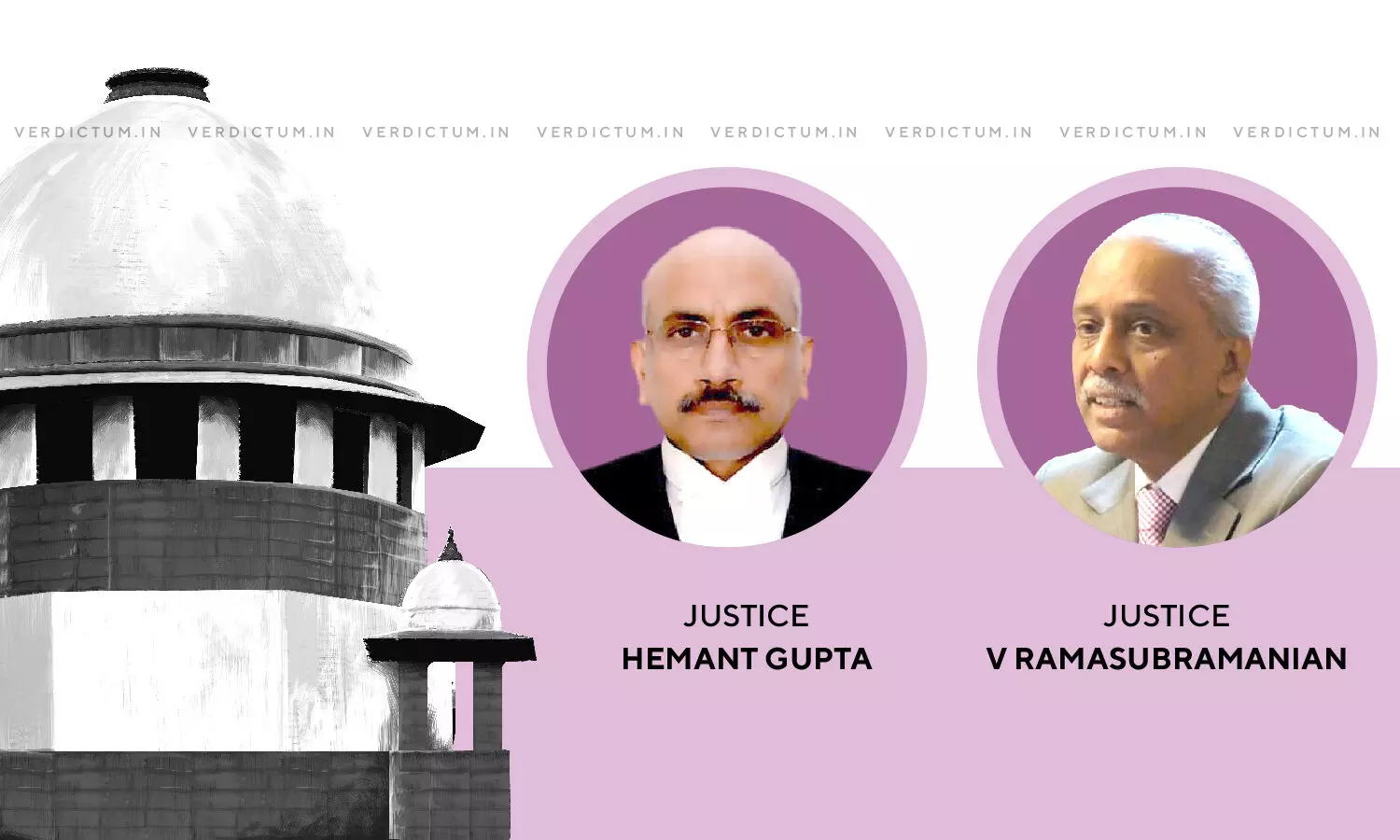
Consumer Protection Act – SC Treats Complaint Filed By Flat Purchasers With Sameness Of Interest As Joint Complaint Instead Of One In Representative Capacity
 |
|A two-judge Bench of Justice Hemant Gupta and Justice V Ramasubramanian has held that when there are few consumers having the same interest, they can file a joint complaint instead of filing a complaint in a representative capacity.
Further, the Court noted that a joint complaint stands in contrast to a complaint filed in a representative capacity. Also, for attracting the provisions of Section 35(1)(c), the complaint filed by one or more consumers on behalf of or for the benefit of numerous consumers having the same interest.
Senior Counsel Mr. Jayant Bhushan appeared for the Appellant, Senior Counsel Mr. Ajit Kumar Sinha appeared for the Respondents and Counsel Mr. Omanakuttan K. K. appeared for the intervenors before the Court.
An appeal was preferred by the Appellant-Builder before the Supreme Court assailing the judgment of the National Consumer Disputes Redressal Commission (NCDRC) which had passed an order under Section 35(1)(c) and allowed 91 purchasers of 51 apartments to file a consumer complaint in a representative capacity on behalf of and for the benefit of about 1000 purchasers.
The Appellant contended before the Supreme Court that out of the total 1134 apartments constructed and sold by them, merely 51 apartments had joined together and invoked the jurisdiction of NCDRC, hence such a limited percentage of consumers cannot seek to file a complaint in a representative capacity.
Further, it was argued by Counsel for Appellant that there was no commonality of interest or grievance, as some individual apartment owners had invoked the jurisdiction of Karnataka State Consumer Disputes Redressal Commission and sought redressal of their separate and distinct grievances.
While the Respondents argued they had the sameness of interest with the buyers of 1134 apartments, which was a sine qua non for maintaining application under Section 35(1)(c).
The Apex Court noted that the delay on the part of the builder in handing over the possession was the primary ground on which compensation was sought by the Respondents.
Further, the Court added that out of the 3 blocks of the project of the Appellant-Builder none of the owners of one the block had joined with the Respondents-Complainants. In this context, the Bench held –
"There is no pleading with respect to the timeline of the project in respect of Amber block, the consumer complaint filed by the respondents cannot be treated as one representing the owners of 386 apartments in Amber block."
"The respondents ought to have either included as one of the complainants, the owner of one of the apartments in Amber block or at least made necessary averments in the pleading about the timeline for completion of the Amber block, to make the complaint, as one filed in a representative capacity on behalf of the owners of flats in all the three blocks," the Court opined.
The next issue which was dealt with by the Court was –
Whether the complaint was maintainable in a representative capacity on behalf of the owners of the flats in Blue block and Crimson block, in the light of the requirements of Section 35(1)(c) of the Act.
The Court in this context observed that the sine qua non for invoking Section 35(1)(c) is that all consumers on whose behalf or for whose benefit the provision is invoked, should have the same interest.
The Bench while referring to Order I Rule 8 CPC opined, "The Explanation under Order I Rule 8 is of significance. It distinguishes persons having the same interest in one suit from persons having the same cause of action. To establish sameness of interest, it is not necessary to establish sameness of the cause of action."
"The Explanation under Order I Rule 8, is a necessary concomitant of the provisions of the Rules 1 and 3 of Order I.Order I Rule 1, CPC, allows many persons to join in one suit as plaintiffs. Order I, Rule 3 allows many persons to be joined in one suit as defendants. But to fall under Order I Rule 1 or Order I Rule 3, the right to relief should arise out of or be in respect of the same act or transaction allegedly existing in such persons, jointly, severally or in the alternative. To some extent, Rules 1 and 3 of Order I are founded upon the sameness of the cause of action. This is why the Explanation under Order I Rule 8 distinguishes sameness of interest from the sameness of the cause of action," the Bench observed.
Additionally, the Court held, "Since "sameness of interest" is the prerequisite for an application under Order I Rule 8, CPC read with Section 35(1)(c) of the Consumer Protection Act, 2019, it was necessary for the respondents to include in the consumer complaint, sufficient averments that would show sameness of interest."
"There is no scope for the contention that wherever there are more consumers than one, they must only take recourse to Order I Rule 8 CPC, even if the complaint is not on behalf of or for the benefit of, all the consumers interested in the matter. There may be cases where only "a few consumers" and not "numerous consumers" have the same interest. There is nothing in the Act to prohibit these few consumers from joining together and filing a joint complaint," the Court held.
In the light of these observations, the Court held that the NCDRC was wrong in permitting the application under Section 35(1)(c) read with Order I Rule 8 CPC. The Court further directed that the complaint of the Respondents may have to be treated as a joint complaint and not a complaint in a representative capacity on behalf of 1134 purchasers and allowed the appeal.
Click here to read/download the Judgment